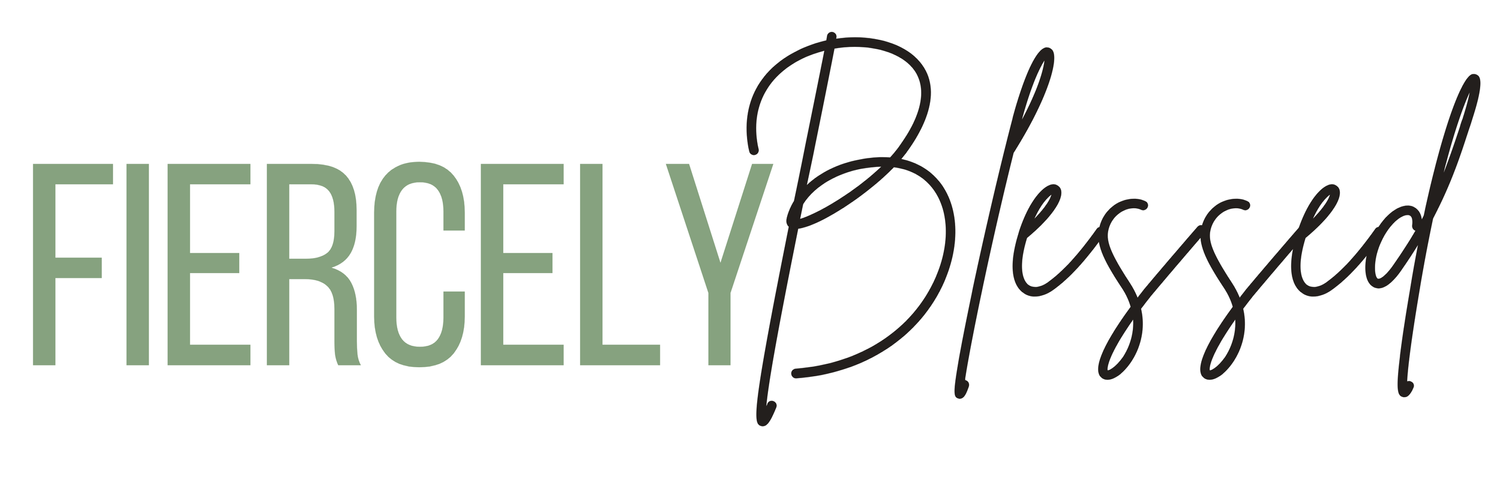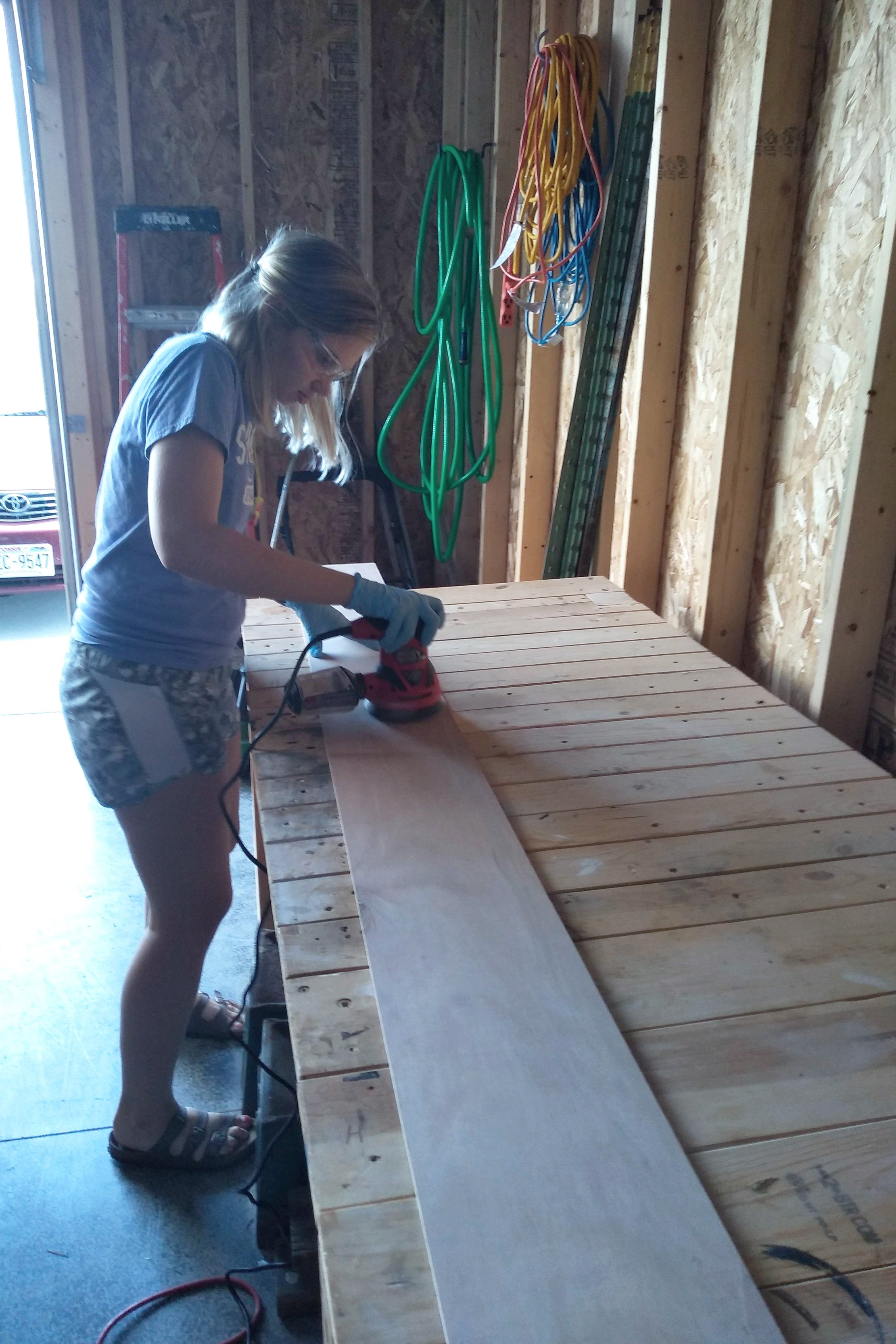Inexpensive & Easy Shiplap
I often wonder if shiplap will be a thing people will be wanting to tear out 20 years from now because it was so early 2000s, but we are living it, so I’m not afraid to say that I am a big fan of a little shiplap here and there!
We have shiplap accents in a few spaces in our home, and I have a few more spots I hope to filter it in as well. You could put shiplap as a whole wall, like we did in our bathroom, a small accent piece in a room, or a focal point, like we did in our living room. We have all of our shiplap laying horizontal right now, but at some point in our near future, I hope to do some vertical shiplap, because I think it adds a different element, but until then, let’s talk through what we use for “shiplap”.
Step One: Buy 1/4” Thick Plywood
We strip shiplap boards from SUPER thin plywood, as thin as it goes at 1/4”. We typically get 4’x8’ boards from Menards, and they are under $15 a piece, and you can get quite a few strips from those boards. This is basically most of your cost for this project, which means it is very cheap to completely transfer the look of a room. To figure out how much you need, determine the square footage area of the wall that you want to cover and add a little extra for scrap or mistakes.
Optional: At this point, you can certainly sand down the plywood sheets if you have the space, or sand them down after you have them stripped into planks (We’ve done both). Throw it on the ground and take your orbital sander to give it a light sand just to smooth out anything crazy. The thing I love about this shiplap is when you paint it, you truly do see that it is true wood and it isn’t a “smooth” finish, so a light sand is really all you need!
Step Two: Strip into Shiplap Boards
We chose to do this piece at home with our table saw, but I’ve also heard that you can have your local home improvement store do this for you as well if you don’t own a table saw or aren’t comfortable cutting these yourself.
First, determine what width you like your shiplap boards to be. I prefer shiplap boards that are a bit thicker, so we’ve done anywhere between 7” to 8” thick. I also know that the skinnier shiplap boards give a different look, so if you have some extra plywood, cut a strip with a few different thicknesses and cut then into short sections and stack them on top of each other to give yourself an idea of what it will look like before you cut ALL of your strips and learn you actually might hate it.
Once you know your width, cut a bunch of shiplap planks at the same width. Because of how big our plywood board is, this is a two man job to ensure your boards aren’t crooked. I wouldn’t recommend trying to cut these with a circular saw unless you have to, as it is going to be harder to get straighter lines, but certainly doable if you are patient and if this is all you have available to you!
Step 2 ½: Mark the Studs on your Wall
Before you start nailing the wood planks to the wall, use your stud finder to find where all the studs are and then use your level to draw a line down the wall to “mark” the studs. This will come in handy when you start nailing your boards on the wall.
Step 3: Nail the Boards to the Wall
I haven’t found the magic potion on whether or not you should start from the top or the bottom, but the only thing I can stress is that you make sure that every board you place is LEVEL. A lot of houses don’t have straight walls, floors, counters, corners, or ceilings, so placing your boards level, especially your first board, will determine the look of your whole project.
I would not suggest starting to place a board in the middle of your wall though, so start either from the bottom or top of your space (or left or right if you are doing vertical shiplap). Cut your plank to the length it needs to be to fit in the space (you can use your miter saw or circular for this), and then hold it against the wall, put the level on it and get it level. After you have it where you want it, use the nail gun to nail both ends first to the wall, and then nail down the length of the board where it overlaps with studs to give it a good stick to the wall. Make sure the nails are not sticking out at any point above the wood, otherwise they will stand out after the finished product is complete.
After your first board, determine and cut the length of your next board. Place that board on the wall right against the board you have against the wall. To help give it the “shiplap” look, you want a little bit of a gap between the boards, and you want it to be the same size gap throughout. We used nickels as our spacers - that’s right, 5 cent coins! We had them on hand and thought it was the perfect amount of thickness. So, slide a few nickels throughout the length of the boards in between them, push it all together as tight as possible, check the levelness (which should be good as long as your first board was level and your current board was cut straight), and nail it into the wall like you did the first. After you have that board attached, pull the nickels out, and repeat for the rest of the wall you want to complete until it’s all covered.
Step 4: Frame It Out (Optional)
If you’d like to frame out your shiplap, I’d recommend just using some cheap 1x2 or 1x3 Poplar wood strips. It’s a really inexpensive wood and since you are painting it anyway, it’s the perfect option because you don’t feel bad covering it up! Simply use the nail gun to put these strips lining up with the edges of your shiplap.
Step 5: Fill in Nail Holes
To really give it a polished look, you could either use wood filler or some spackle to fill in over all of your nails, and then sand them down after they dry to make sure it is seamless. I’ve done this on two of my shiplap walls, and then I didn’t on my last one, and after I painted over it, I can’t even find where the nails were even when I didn’t do the spackle. However, I would say to stay on the safe side, take the extra time with the spackle. It doesn’t take much!
Step 5: Paint Everything!
I have painted at many different times of the shiplap process, so while I put this step here, it could be at a different point in your project - below are all the ways I have done it; choose one that sounds the most appealing to you, or come up with your own combo!
For our bathroom shiplap process (our first go at this), we stripped the planks, then I painted around all the edges in white, and then painted with a roller after it was on the wall and fully spackled. It was extremely putsy to paint around all the edges on the individual strips and then lay them out the dry and make sure the paint wasn’t dripping, etc. I would not recommend this method.
For our small accent wall in our laundry room, I just rolled the full plywood sheet after sanding it, then stripped the planks and then put them on the wall, then spackled, repainted over the spackle, but then still had to fill in with paint between the small gaps between the boards because you could see the wood color in the cracks - also putsy, but doable!
For our living room built in, I once again painted the full sheet, then stripped the boards, but then as we were putting them on, we would run a quick paintbrush on the edges before we put it on the wall, and then I just painted over the nails - no spackle. This seemed to be the quickest process, but also the messiest because we were dealing with wet paint as we were working through this.
I typically would also paint the poplar borders before putting them on, especially if they were butting up against a wall or something just so I didn’t have the tape or worry about getting paint on places that shouldn’t have paint.
Regardless of when you paint, just get it painted! I’ve learned that you really can’t go wrong, you probably will find things that work well for you as you go along.
Step 6: That’s It!
That’s all there is, folks! This is the easiest thing that I’ve found to do for shiplap and it completely dresses up a space.
Baseboards/Floor Trim:
One thing that typically is brought up is what to do with baseboards if you are completely going to the floor. I’ve got two suggestions, neither one of them I’ve done with shiplap.
When we did our bathroom, we framed out the shiplap on TOP of the baseboards. DON’T DO THIS. Someday, I hope to go back and change this, but this mistake occurred when we were early into our DIY journey, so we didn’t know any better. Here are my two thoughts on what to actually do with baseboards:
Pull off your baseboards, run the shiplap to the floor, and then reattach your baseboard on top of the shiplap.
Pull off your baseboards, run the shiplap to the floor, then reattach a border piece that is the same color as your shiplap and have that serve as your “baseboard”.
Don’t forget, you can also do colored shiplap as well (it’s also on my list), so feel free to get a little crazy; people will probably tear it out 20 years from now, anyway!















